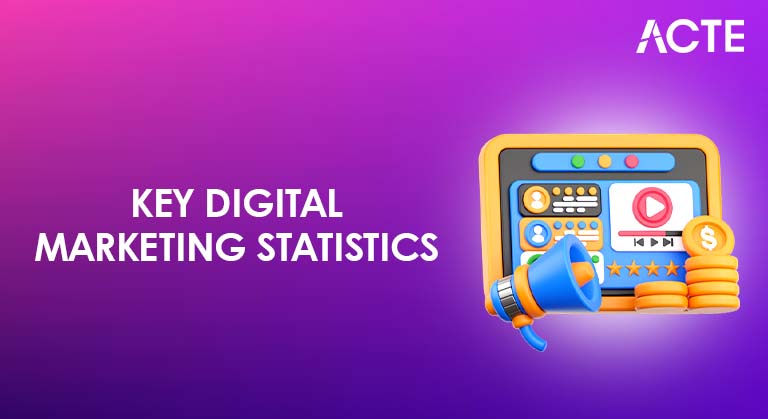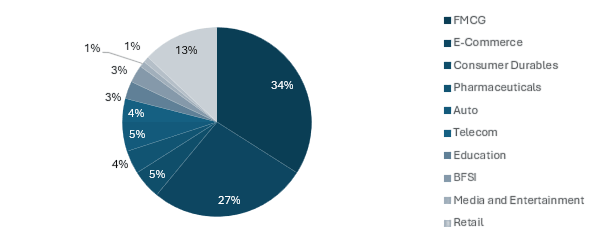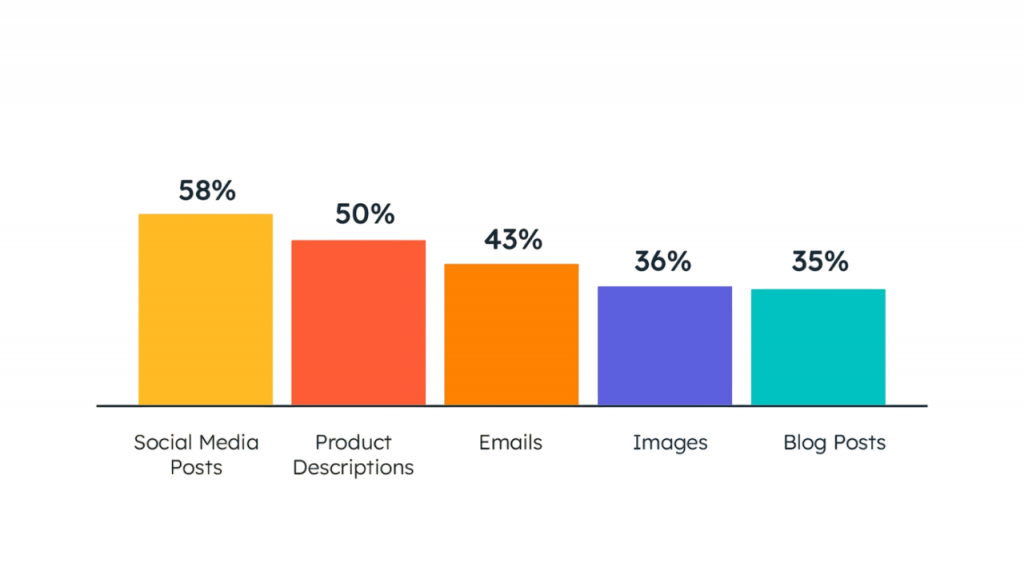
- Introduction
- The Growth of Digital Marketing
- Internet Usage and Online Behavior
- Social Media Marketing Statistics
- Search Engine Marketing (SEM) & SEO Trends
- Email Marketing Statistics
- Mobile Marketing Insights
- Content Marketing Performance
- Conclusion
Introduction
Digital marketing continues to evolve rapidly, driven by technological innovation and shifting consumer habits. For marketers, understanding the latest statistics is crucial to building effective strategies and staying competitive. This article compiles key digital marketing statistics across various channels and platforms in 2025, helping businesses make informed decisions.Digital marketing continues to grow rapidly, with global digital ad spending expected to exceed $650 billion in 2024, underscoring the importance businesses place on online channels. Search Engine Marketing (SEM) remains a top performer, with over 60% of marketers citing it as their highest ROI driver. Mobile devices contribute to more than 55% of all web traffic, making mobile-friendly campaigns crucial. Content marketing significantly boosts engagement, Digital Marketing Training delivering conversion rates up to six times higher than those without it. Email marketing also proves highly effective, Email Marketing Statistics generating an average return of $42 for every dollar spent. Social media platforms reach nearly 5 billion users worldwide, offering unparalleled opportunities for targeted advertising. Additionally, video content is rapidly dominating the digital landscape, expected to comprise 82% of all internet traffic soon. With around 70% of online experiences beginning on search engines, leveraging SEO and SEM remains vital for visibility. Personalized marketing campaigns further enhance success by increasing conversion rates by over 200%, highlighting the power of tailored strategies in today’s competitive market.
Ready to Get Certified in Digital Marketing? Explore the Program Now Digital Marketing Online Training Offered By ACTE Right Now!
The Growth of Digital Marketing
- Rapid Expansion: Due to global smartphone usage and rising internet availability, digital marketing has expanded rapidly over the last ten years.
- Traditional Media Shift: Companies are shifting their advertising dollars away from traditional media like print and television and toward digital platforms.
- Social media’s rise: With billions of users using sites like Facebook, Instagram, TikTok, and LinkedIn every day, these platforms are now essential to marketing tactics.
- Data-Driven Strategies: By using sophisticated analytics and tracking systems, marketers may improve targeting and return on investment by optimizing campaigns in real time.
- Increased Mobile Usage: Marketers are now compelled to produce mobile-friendly content and advertisements due to the rise in the use of mobile.
- Growth in Video and Visual Content: Video marketing, live streaming, TensorFlow and interactive content have become essential for capturing audience attention.
- E-commerce Boom: Online shopping growth has driven businesses to invest more in digital marketing to capture online customers.
- Emergence of AI and Automation: AI-powered tools and marketing automation streamline processes, personalize user experiences, and enhance efficiency.
- Global Reach: Digital marketing allows businesses, regardless of size, to reach global audiences easily and cost-effectively.

Internet Usage and Online Behavior
- Global Internet Penetration: Over 5.3 billion people worldwide use the internet as of 2025, reflecting widespread connectivity.
- Average Daily Time Online: The average person spends about 6.5 hours online each day, engaging with various digital content and platforms.
- Mobile Dominance: More than 60% of internet traffic comes from mobile devices, highlighting the importance of mobile-optimized websites and apps.
- Search Engine Usage: Approximately 90% of online experiences begin with a search engine, making search behavior critical for digital marketing.
- Social Media Engagement: Over 4.9 billion users actively use social media, spending an average of 2.5 hours daily on these platforms.
- Video Consumption: Video content accounts for more than 80% of all internet traffic, Digital Marketing Training indicating user preference for visual media.
- E-commerce Growth: Increasing numbers of users shop online, with over 2 billion digital buyers globally and rising year over year.
- Multichannel Behavior: Users frequently switch between devices and channels,expecting seamless experiences across platforms.
- Content Preferences: Users favor personalized, interactive, and authentic content, often engaging more with brands that provide value and relevance.
- AI and Machine Learning: Use of AI-driven tools for predictive analytics, automated bidding, and personalized ad creation is transforming SEM and SEO strategies.
- Voice and Visual Search Optimization: Growing importance of optimizing for voice queries and visual search tools like Google Lens, focusing on conversational and long-tail keywords.
- Mobile-First and Local SEO: With over 57% of search traffic from mobile devices and a 500% increase in local searches, Copywriting optimizing for mobile and local search is critical.
- Interactive Ad Formats: Adoption of AR (Augmented Reality) and VR (Virtual Reality) in ads to create immersive, engaging user experiences.
- Zero-Click Searches: Rise of zero-click searches makes optimizing for featured snippets and rich results essential for maintaining visibility.
- Data-Driven Strategies: Real-time data analysis and adjustment of campaigns enhance targeting and improve ROI.
- Content Quality and User Intent: Focus on creating high-quality, relevant content that matches user intent to rank higher in search results.
- Enhanced User Experience: Improving page speed, mobile usability, and site architecture to meet search engine ranking factors.
- Mobile Marketing advertising accounts for 70% of total digital ad spend worldwide.
- Over 55% of website traffic comes from mobile devices, but mobile conversion rates lag desktop by about 15%.
- Accelerated Mobile Pages (AMP) and progressive web apps (PWAs) are improving mobile user experience, driving higher engagement.
- SMS marketing sees an average open rate of 98%, making it one of the most effective direct communication tools.
To Explore Digital Marketing in Depth, Check Out Our Comprehensive Digital Marketing Training To Gain Insights From Our Experts!
Social Media Marketing Statistics
Social media marketing continues to be a dominant force in the digital marketing landscape, with billions of active users worldwide. As of 2025, over 4.9 billion people use social media platforms, Email Marketing Statistics spending an average of 2.5 hours daily engaging with content. This massive user base presents unparalleled opportunities for businesses to connect with their target audiences. Platforms like Facebook, Instagram, TikTok, LinkedIn, and Twitter offer diverse advertising options that allow marketers to reach specific demographics with precision. Research shows that nearly 73% of marketers believe social media marketing has been somewhat or very effective for their business. Video content on social media, including short-form videos and live streams, drives higher engagement rates, Choose a Career in Digital Marketing with video posts generating up to 48% more views and interactions than other types of content. Additionally, social commerce is rapidly growing, with projections estimating social media-driven e-commerce sales to exceed $1 trillion globally by 2025.

Influencer marketing also plays a significant role, as 63% of consumers trust influencer recommendations over traditional ads. Social media ads provide a strong return on investment, with the average click-through rate (CTR) ranging between 1% to 3%, depending on the platform and industry. Overall, Market Research these statistics highlight the importance of social media marketing as a vital channel for brand awareness, customer engagement, and sales growth.
Search Engine Marketing (SEM) & SEO Trends
Looking to Master Digital Marketing? Discover the Digital Marketing Expert Masters Program Training Course Available at ACTE Now!
Email Marketing Statistics
Email marketing remains one of the most effective digital marketing channels, delivering impressive returns for businesses across industries. Studies show that for every dollar spent on email marketing, the average return on investment (ROI) is $42, making it one of the highest ROI channels available. Globally, over 4 billion people actively use email, and this number is expected to grow steadily. Email campaigns boast an average open rate of around 20-25%, with click-through rates (CTR) typically ranging between 2-5%, depending on the industry and email content. Personalization plays a crucial role in boosting engagement; emails with personalized subject lines have a 26% higher open rate compared to generic ones. Additionally, segmented email lists see significantly better performance, Metric in Google Analytics with businesses reporting a 760% increase in revenue from targeted campaigns. Mobile optimization is also critical, as over 60% of emails are now opened on mobile devices. Automation features like drip campaigns and triggered emails further enhance effectiveness by delivering timely, relevant messages based on user behavior. Despite the rise of social media and other digital channels, email remains a trusted and direct way to connect with customers, nurture leads, and drive conversions. These statistics highlight why email marketing continues to be a cornerstone of successful digital marketing strategies.
Mobile Marketing Insights
Content Marketing Performance
Content marketing remains a powerful strategy for businesses aiming to engage audiences and drive conversions. Studies show that companies prioritizing content marketing experience up to six times higher conversion rates compared to those that don’t. Quality content helps build trust, educate customers, SEO Keyword Research and establish brand authority, resulting in increased website traffic and longer user engagement. Blogs, videos, infographics, and podcasts are among the most effective formats, with video content driving the highest engagement. Additionally, 70% of consumers prefer learning about products through content rather than traditional ads, highlighting the importance of valuable, informative content. Content marketing also supports SEO efforts by improving search rankings through targeted keywords and backlinks. Organizations that maintain consistent content publishing schedules report a 67% increase in leads compared to inconsistent publishers. Overall, content marketing’s performance underscores its critical role in nurturing customer relationships and supporting long-term business growth.
Preparing for Digital Marketing Job Interviews? Have a Look at Our Blog on Digital Marketing Interview Questions and Answers To Ace Your Interview!
Conclusion
Digital marketing is an ever-changing field powered by data and technology. Understanding the latest statistics allows businesses to strategize effectively, allocate budgets wisely, and optimize campaigns for maximum impact. From the dominance of mobile and video to the rise of automation and data privacy concerns, Digital Marketing Training these insights reveal the forces shaping marketing success in 2025 and beyond.Staying updated with these statistics will help marketers anticipate trends, meet customer expectations, and drive measurable business growth.




